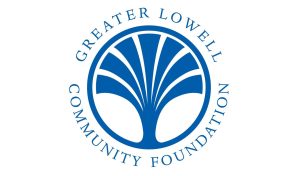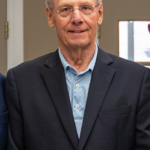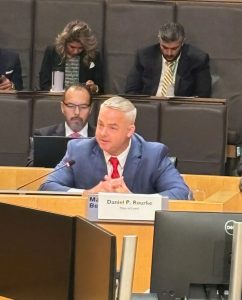 Lowell Mayor Danny Rourke recently traveled to the Great White North, representing the Mill City at the 2024 Urban Economy Forum.
Lowell Mayor Danny Rourke recently traveled to the Great White North, representing the Mill City at the 2024 Urban Economy Forum.
Rourke was invited to the international event as result of a July feature about him and the city in an online business platform, Capital Analytics, which is a favored resource of trade and investment boards, executives of Fortune 500 companies, institutional investors, consulates and embassies, as well as high-level summits and conferences.
This year’s forum was held in Toronto, Canada, September 25-27. It featured Emilia Saiz, United Cities and Local Governments (UCLG) Secretary General and Carlos Moreno of the Paris Sorbonne Business School, who delivered the keynote address.
Rourke tells InsideLowell attendees have already expressed significant interest in the Mill City and that at least one organization would like to follow up regarding housing solutions.
(The speech Lowell’s Mayor delivered at the Forum is published below, in its entirety)
“First of all, I would like to extend my sincerest thanks for the invitation to speak at this year’s Forum. I am especially honored to be the only American Mayor being at the UEF for the next few days talking about and promoting the city I was raised in, went to school, work, serve and raise our family. As you all know, the Urban Economy Forum is in collaboration with the United Nations and their 17 sustainable development goals, most notably its 11th goal which focuses on sustainable cities and communities. Inclusivity, safety, resilience, and sustainability are all issues we take to heart while making decisions for the city of Lowell and its future.
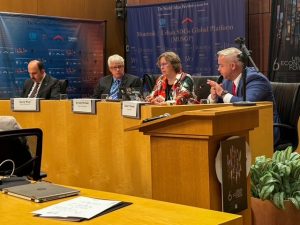 A little background about Lowell. We are the fourth largest city in the Commonwealth of Massachusetts. Located thirty miles north of Boston and a couple hundred miles north of New York City. Lowell is located along the Merrimack River, with many canals in and around the city. We are an immigrant city, and I say that with the upmost pride and honor. Our diversity is our most major selling point. Lowell High School has students that speak over sixty languages and our Folk Festival is represented by over forty countries yearly.
A little background about Lowell. We are the fourth largest city in the Commonwealth of Massachusetts. Located thirty miles north of Boston and a couple hundred miles north of New York City. Lowell is located along the Merrimack River, with many canals in and around the city. We are an immigrant city, and I say that with the upmost pride and honor. Our diversity is our most major selling point. Lowell High School has students that speak over sixty languages and our Folk Festival is represented by over forty countries yearly.
Lowell, being such a popular tourist destination, is constantly considering how best to encourage and embrace tourism in a way that is not only sustainable, but beneficial to both residents and visitors alike.
The City of Lowell, Massachusetts has long been a major draw for people of all walks of life since its start as the first planned industrial community in 1826. Nearly two centuries later, Lowell, often referred to as the “Cradle of the American Revolution “, remains a place where higher education, art, culture, and natural beauty flourish. As I like to say, Lowell is where the past meets the present.
The textile mill boom that started in the early 19th century and peaked by 1924 garnered the attention of many people, and thus attracted tourists from numerous regions; possibly the most notable of these early tourists was the English writer, Charles Dickens, whose visit lasted but a single day had made a positive and lasting impression.
 Lowell’s rich history lends itself to many impressive and fascinating landmarks and sites. After the opening of the city’s very first factory in 1823, numerous cotton textile mills began emerging along the Merrimack River throughout the early 19th century, employing thousands of immigrants from Ireland, Canada, Greece, Poland, and Lithuania. Soon thereafter and all the way up to present day, immigrants from all over the world began coming to Lowell, Ma. Immigrants from African, Hispanic, Indian and Southeast Asian countries began arriving in Lowell, contributing their hard work, culture and faith to our city. The lives and impacts made by these immigrants are honored through various flag raisings, remembrances, and installments of exquisitely intricate monuments made of bronze, granite, and stone which decorate the culturally diverse city that is Lowell. The oldest monument in Lowell dates to 1865, it is the burial spot of Luther Ladd and Addison Whitney who were among the first soldiers to die in the American Civil War. This structure stands at nearly 28 feet tall and can be seen from our City Hall. These monuments can be spotted throughout the city whether you are on your morning commute to work or enjoying a guided walking tour offered by the Lowell National Historic Park Service and each offer a glimpse into the fascinating and proud history of Lowell.
Lowell’s rich history lends itself to many impressive and fascinating landmarks and sites. After the opening of the city’s very first factory in 1823, numerous cotton textile mills began emerging along the Merrimack River throughout the early 19th century, employing thousands of immigrants from Ireland, Canada, Greece, Poland, and Lithuania. Soon thereafter and all the way up to present day, immigrants from all over the world began coming to Lowell, Ma. Immigrants from African, Hispanic, Indian and Southeast Asian countries began arriving in Lowell, contributing their hard work, culture and faith to our city. The lives and impacts made by these immigrants are honored through various flag raisings, remembrances, and installments of exquisitely intricate monuments made of bronze, granite, and stone which decorate the culturally diverse city that is Lowell. The oldest monument in Lowell dates to 1865, it is the burial spot of Luther Ladd and Addison Whitney who were among the first soldiers to die in the American Civil War. This structure stands at nearly 28 feet tall and can be seen from our City Hall. These monuments can be spotted throughout the city whether you are on your morning commute to work or enjoying a guided walking tour offered by the Lowell National Historic Park Service and each offer a glimpse into the fascinating and proud history of Lowell.
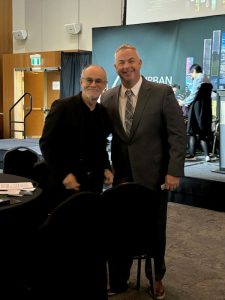
Mayor Danny Rourke with Dr. Carlos Moreno
In addition to the downtown walking tours, the Lowell National Historic Park has made great strides in preserving Lowell’s vibrant history. Established in 1978, the Lowell National Historic Park has made the preservation of the historic downtown area its duty and is responsible for the protection of numerous mill buildings against demolition. This is why when you walk the streets of downtown Lowell, you feel as if you are stepping back in time, Victorian-style architecture and churches built in the 19th century are at every turn.
The Boott Cotton Mills Museum is offered through our National Historic Park and walks guests through the city’s history through the mediums of video presentations and interactive exhibits. Another approach to getting an authentic feel of historic Lowell is by paying a visit to Mill No. 5, a restored and repurposed mill building which now houses a shopping center, an independent theatre, a cafe, a weekly farmers market and a working space for start-ups and creatives. Both sites attract tourists daily, as well as open up many job opportunities for citizens.
Education is key not only to Lowell’s overall success as a municipality, but also for sustaining our tourism. There are very few cities similar to the size of Lowell where a student can go from pre-k to a doctorate all within walking distance. You can do exactly that in Lowell, Massachusetts. Our two schools of higher education are second to none. Middlesex Community College is routinely recognized as one of the top Community Colleges in the United States. Our own University of Massachusetts at Lowell offers a wide variety of programs and degrees, including vital areas such as engineering which is so vital for the future in sustainable growth.
 The University of Massachusetts Lowell is also a major source of tourism for the city. In addition to the hundreds of students and their families who annually visit the university while in the process of deciding which school is a best fit for them, many people from outside of the Greater Merrimack Valley and beyond are attracted to the campus due to the multiple buildings and event spaces which are open to the public.
The University of Massachusetts Lowell is also a major source of tourism for the city. In addition to the hundreds of students and their families who annually visit the university while in the process of deciding which school is a best fit for them, many people from outside of the Greater Merrimack Valley and beyond are attracted to the campus due to the multiple buildings and event spaces which are open to the public.
For one, there is the Tsongas Center, the UMass Lowell-owned arena which stands as the home of the school’s basketball and hockey teams. Furthermore, Mayor Vrbanovic, you should know that one of Kitchener’s own, Loren Gabel, is a member of our Women’s professional hockey team, The Fleet. The Fleet this past season was a major influence in Lowell’s tourism, routinely selling out the Tsongas Center and making it all the way to the championship series. The Center, in addition to the university’s athletic events, also hosts concerts, conferences, and even features function rooms available for booking. Opened in 1998, the Tsongas Center remains a popular destination for people of all ages and backgrounds.
The development of the Lowell Innovation Network Corridor, or LINC, is a private-public partnership with UMass Lowell that seeks to relocate companies to meet their needs of working alongside the university’s research centers, faculty members and students. This development seeks to bring in between an estimated 4 to $6 million in new tax revenues to benefit Lowell residents, and the city’s overall economic status. Additionally, LINC expects to create roughly 1,300 jobs in construction and 2,000 permanent jobs not only in laboratories and offices but also in restaurants, retail, and event spaces.
 Lowell’s arts and cultural events are another factor in making the city the alluring destination it is. Our annual three-day folk festival highlights many local artists, musicians, as well as cultural dishes, and is free to all visitors. The Lowell Folk Festival is the longest running, second largest free Folk Festival in the United States. We are here this week to talk about sustainable tourism, and I can think of no bigger example of that than our own Folk Festival. The Festival attracts over 100,000 visitors each year to witness all that Lowell has to offer. We also pay tribute to the life and literature of the Lowell-born and raised writer, Jack Kerouac, in an annual festival that sponsors literary programs and engages with residents and distant visitors alike in educational and cultural activities.
Lowell’s arts and cultural events are another factor in making the city the alluring destination it is. Our annual three-day folk festival highlights many local artists, musicians, as well as cultural dishes, and is free to all visitors. The Lowell Folk Festival is the longest running, second largest free Folk Festival in the United States. We are here this week to talk about sustainable tourism, and I can think of no bigger example of that than our own Folk Festival. The Festival attracts over 100,000 visitors each year to witness all that Lowell has to offer. We also pay tribute to the life and literature of the Lowell-born and raised writer, Jack Kerouac, in an annual festival that sponsors literary programs and engages with residents and distant visitors alike in educational and cultural activities.
It is evident that the city of Lowell has long been an enticing place to visit, with endless opportunities for all people of all backgrounds, and will continue to flourish as new and exciting things constantly take place. Keeping tourism sustainable and beneficial to Lowellians and those visiting from anywhere in the world is at the forefront of our minds now and always.
Once again, let me thank the UEF for inviting me to be here and talk about the city I love. I look forward to meeting, talking, and engaging in conversations for the betterment of us all.”









